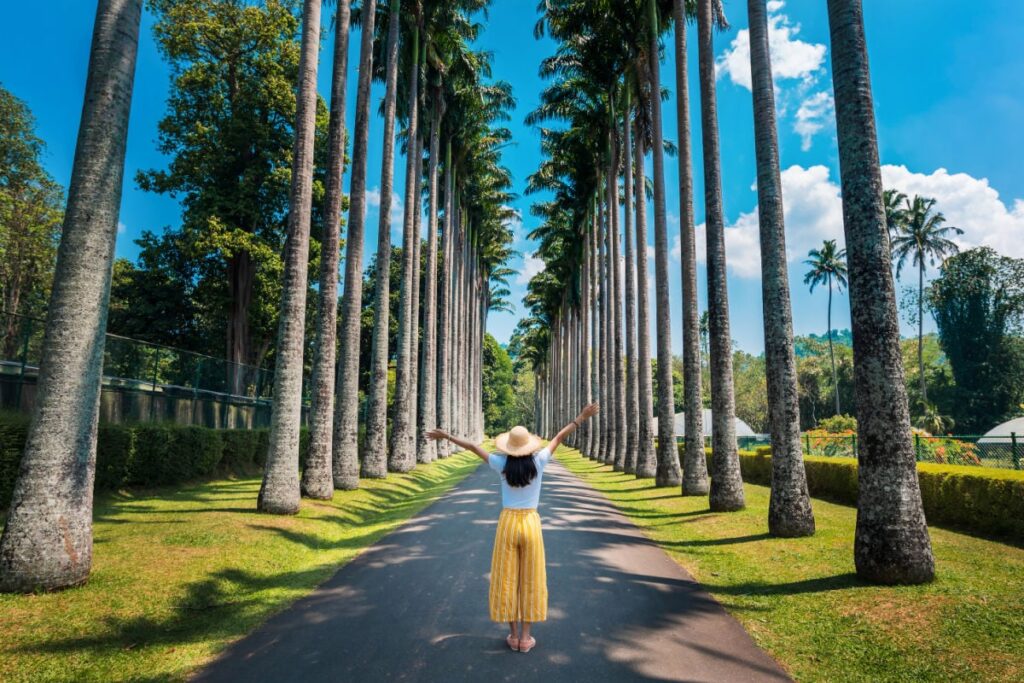Travel Guide
This Tropical Island Has The Easiest Entry Requirements For Digital Nomads In Asia
Last Updated
Famous for its tropical weather, affordable living and welcoming locals, Asia is one of the most popular destinations for digital nomads in 2024
However, the lack of preparedness to host long-term visitors, and in some cases, overly-strict visa rules have been known to pose problems.
Alas, a majority of Asian countries only allow foreigners to remain for 30 days only, excluding visa renewals, and this includes tried-and-true nomad hubs Bali and Thailand, the Philippines, and even off-path Cambodia, which require visiting nomads to leave after only a month.

This is unlikely to be a problem when you’re country-hopping, but if you plan on exploring a single destination for longer, without being in a constant state of packing and unpacking and being able to settle into a routine, the 30-day rule can be daunting.
Interestingly, Asia’s least-celebrated tropical island has the easiest entry requirements in the entire continent, with tourists and remote workers alike authorized to stay a whole six months, and we can’t fathom why it is yet to be discovered by the nomad community.
Sri Lanka Launches New Generous eVisa

Having recently launched a new easy-to-apply eVisa, Sri Lanka has officially become the Asian country with the least complicated entry requirements if you’re a digital nomad, not only due to how unbureaucratic the visa is, but mainly its validity.
We know what you’re thinking: how can a visa-requiring country be exactly visitor-friendly? Well, an eVisa is different from a regular physical visa: it’s similar to a travel authorization and it can be obtained online by filling out a simplified form.
In Sri Lanka’s case, all American nomads have to do is log into the eVisa platform and apply for a ‘Standard Visitor Visa’. In the form, they’ll be required to include personal information such as given names and family name and their passport number.

American Nomads Can Stay 180 Days Straight Upon Each Entry
They will then be redirected to a page where they’ll have to pay the visa fee – set at $100 for U.S. passport holders – and it may sound expensive, but here comes the good part: once the visa is approved, it will be valid for five years, for visits of up to 180 days.
This means you can travel to Sri Lanka as many times as you wish within the next half-decade, as long as each visit does not exceed six months; there is also no fixed period of time tourists are meant to stay outside Sri Lanka after spending 180 days in the country before they’re able to return.

This is no Schengen Area, folks: if you’d like to ‘renew’ your stay, as long as your five-year visa remains valid, all it takes is a ‘visa run’ – in nomad vernacular, it means a cross-border trip to another country in the vicinity only to return a few days later – to get a brand new 180 days.
This makes it easy for nomads to set up base in Sri Lanka legally, while still holding the status of tourists, without applying for residence permits.
What About Non-American Nomads?

As for other tourists (non-Americans), their visa cost is $75, cheaper than the American, but on the downside, they only get 60-day stays, and it’s not valid for five years: it can only be used twice.
The non-American visa can be renewed from within Sri Lanka, for an additional 2 months, bringing a non-American’s total length of stay to 3 months at time, but if that’s the route an applicant is taking, they won’t be able to use the same visa to re-enter Sri Lanka a second time.
Non-Americans can opt for a one-year multiple entry visa, allowing for stays of up to 90 days at a time and costing $200, or a two-year multiple entry, which then increases the length of stay during each individual visit to 180 days ($300).

In order to get a five-year visa for 180-day long stays, non-Americans must fork out $500 upon checkout on the official website, $400 more than their U.S. counterparts.
If they’re really sure Sri Lanka is their spiritual home, and they intend to live there through several consecutive visits of up to 180 days each, a 10-year multiple-entry permit is available, to the tune of $1000.
The ten-year visa is available to all irrespective of nationality. Either way, Sri Lanka has the most generous visa policy out of all Asian countries, particularly pertaining to American guests.

Why Is Sri Lanka An Amazing Digital Nomad Destination?
Sri Lanka is one of Asia’s most intriguing island states, located in the Indian Ocean, and home to a multicultural, multi-faith populace, vibrant cosmopolitan cities, and areas of outstanding natural beauty:
We’re talking Jurassic World-like nature preserves, unspoiled sandy beaches bounded by teal-colored waters and unspoiled elephant sanctuaries.
Sri Lanka’s number one nomad spot is the capital Colombo, a 752,000-people-strong metropolis best known for its incredible mix of native architecture, European colonial, and high rises, as well as a plethora of Western-style, work-friendly brunch cafes, and city parks.

Away from bustling Colombo, some of Sri Lanka’s most noteworthy landmarks include:
- Kandy, an up-and-coming resort town straddling the Indian Ocean
- Sigirya, an ancient fortress resting atop a vertiginous, 200 meter-high monolith
- Galle, the gateway to Southern Sri Lanka’s wild coast and verdant jungles
- Udawalawe National Park, an elephant and wildlife oasis
- Negombo, a laid-back beach city dominated by the ruins of a historic Dutch colonial fort
- Pidurangala, a hiking hotspot and the most famous rock formation in Sri Lanka
- The Nine Arches Bridge, a landmark viaduct bridge dating back to the colonial period
With a sprawling capital city to explore and so much scenic countryside to see, you’d definitely need more than a single month to do Sri Lanka justice, especially if you’re coupling leisure with remote work, and authorities seem to have heard our prayers.
Other than its year-round warm weather and easy entry requirements, Sri Lanka’s greatest triumph on the nomad front is how affordable it is:

Sri Lanka Is Incredibly Cheap To Live In
If you’re leading a more frugal lifestyle, residing in a non-central area of Colombo, and only treating yourself to expensive eateries and pricey spa treatments sporadically, every now and then, you can live here for $680 a month.
That’s $4,080 for half a year, as much as you’d spend living as a digital nomad in a major city like New York, Paris, or London in a single month.
There’s Airbnbs to rent in Colombo from only $286 a month, and if you’ve got some money to burn, a whole villa with a private pantry and dedicated workspace in the nicer part of town costs as cheap as $541 monthly.
Though they can spend a lot less than that if their goal is to save up, living costs in Sri Lanka for the average digital nomad total an acceptable $1,287.
↓ Elevate Your Travel↓
Sign Up Now For Travel Off Path Premium! No ads, VIP Content, Personal Travel Concierge, Huge Savings, Daily Deals, Members Forum & More!

SUBSCRIBE TO OUR LATEST POSTS
Enter your email address to subscribe to Travel Off Path’s latest breaking travel news, straight to your inbox.
This article originally appeared on TravelOffPath.com
Opinions expressed here are the author’s alone, not those of any bank, credit card issuer, hotel, airline, or other entity. This content has not been reviewed, approved or otherwise endorsed by any of the entities included within the post.

